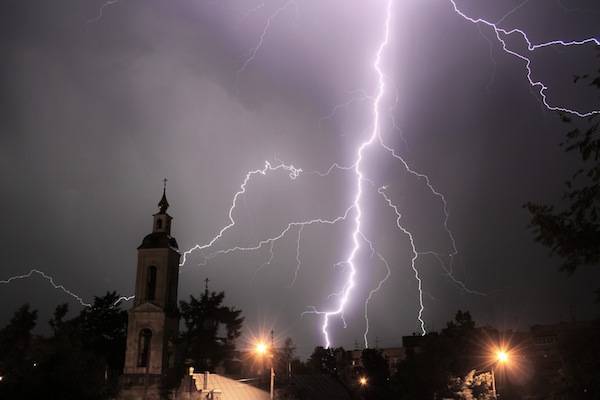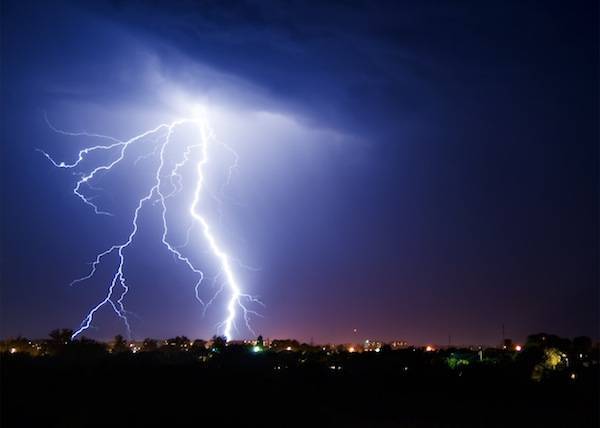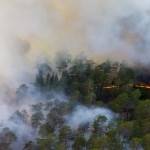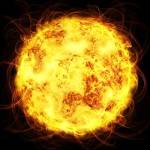Thunderstorm
What Is A Thunderstorm?
Thunderstorms are some of the most frightening and powerful storms to hit the world. A thunderstorm can be known as a lightning storm, a thundershower or even an electrical storm. A thunderstorm is one of the most powerful storms to hit and it forms when the weather is turbulent. This is when the wind picks up greatly and rain is present, though this doesn’t always need to be present. However, lightning and the noise of thunder creates the thunderstorms and if there are certain types of clouds in the sky – cumulonimbus, then it could result in thunderstorms.
On most occasions, thunderstorms will bring on heavy rain falls and strong winds. However, these are the most common types of weather associated with thunderstorms but there are other types of weather that can accompany a thunderstorm. Things such as hail, sleet and snow are all common factors to present itself during a thunderstorm. Some thunderstorms can rotate, if they are quite severe, then they can create supercells which are some of the worst thunderstorms.
How Thunderstorms Are Are Created?
A thunderstorm can be created because of a sharp or rapid surge of moist and warm air. However, as the warm and moist air moves upwards into the air, it will cool down and condenses. When the air does this, the air will form new cumulonimbus clouds. These cumulonimbus clouds can in fact reach huge heights of almost 20 kilometres, sometimes much more than that.
Once the air reaches a certain point, at the dew point, ice and water droplets are going to form and start falling towards the earth and the earth’s surface. It falls from a large distance; however, once the droplets fall, they will be larger because they join up with other droplets. Once the droplets are falling, they will create a new downdraft of the air which will spread out vastly across the surface. This creates winds – strong winds which coincide with thunderstorms.
- Hail
- Rain
- Strong Winds
- Snow
- Sleet
These are some of the things to spot when it comes to thunderstorms.
Where Can Thunderstorm Form?
A thunderstorm can be formed or created in almost any location around the world. Though, the countries that are mid latitude – this is when the air is moist and warm but comes into contact with cool air. Thunderstorms can form anywhere if the air is warm and moist and comes into cooler air. Though, most thunderstorms can be very severe and can cause a lot of damage to landscapes and populated areas also.
Though, most damage that comes from a thunderstorm is due to the larger hailstones which fall with the storm and the down burst winds. Though, on occasion, there have been flash floods to cause a lot of damage. Though, with some thunderstorm formations, they can be very strong or – super cells as they can also be known as, and cause water sprouts and even tornadoes. There are some instances which are not going to be too severe and won’t be anything more than a small rain shower. Some thunderstorm cells which are stronger than average storms can be fifty times the energy of an a bomb.
The Different Types of Thunderstorms
There are however four different types of thunderstorms including;
- Supercells which are the most powerful thunderstorms available
- A single cell which are smaller and not too severe
- A multi cell cluster which is stronger than a single cell storm
- Multi cell lines which are just below a super cell
The super cells are the strongest of thunderstorms that form; and if the thunderstorms are present in the tropics, it could contribute to hurricanes. However, there are also dry thunderstorms which don’t cause any rain, hail or snow fall, but they can cause wildfire outbreaks. This happens because of the lightning that occurs; there might not be any hail or rain but lightning still occurs and causes wildfires.
Many weather observers use things such as weather stations and weather radar to help keep a close eye over pending weather storms including thunder. Interesting though, it has been known for some thunderstorms, can be created on both Venus and Jupiter and not just here on Earth.
The Cycle of a Thunderstorm
The cycle of a thunderstorm firstly starts off with warm air. The warm air needs to have a lower density than cooler air because the air will start to rise actually within the cool air. When this happens, clouds will start to form and they will become a little warmer because inside the clouds, it will now carry moisture.
The moisture will condense and when it does, it will release energy out; however, what this does is to cool the air of the condensed air but the surrounding air will stay the same. If there is instability in the atmosphere then it will create cumulonimbus clouds and that helps to create thunder and lightning. However, for thunderstorms to form, they need moisture, unstable air mass and a lifting force such as heat to create a thunderstorm.
There are different stages to create a thunderstorm. There is the developing stage, then the mature stag and finally the dissipation stage. Though, the thunderstorms can vary from size but for the average storm, it is around 24 kilometres. The period of time in which the thunderstorms can develop is anything from thirty minutes.
When the thunderstorm hits the cumulus stage, or the developing stage; a mass of moisture will be taken up towards the atmosphere. When the moisture goes into the air, the wind will be forced upwards into the atmosphere and will help to develop the thunderstorm. However, the moisture will start cooling and this will form water drops because of the cool temperatures at a high altitude.
With the mature stage, the air which is now warm will rise further up and will continue to do so until it cannot rise any further and the air becomes at its warmest point. When it reaches this point, the air will be forced out a vast area and will start to create an anvil shape creating the cumulonimbus clouds. The water drops will then start to grow larger because they will join up with one another. They will now be heavier and larger and will start to freeze into ice particles. Though, as the ice falls, it will become, or rather melt, into rain.
With the final or dissipating stage, the thunderstorm is created. A downdraft will work up and hit the ground quickly and spread out vastly also. This can be known as a downburst and the cool air will then cut the inflow and stop the thunderstorm also. The thunderstorm will dissipate.
The super cell storms are the biggest and the most severe storms to hit. This is when the super cell storms have different up and down drafts causing the super cell. It can stretch out to a vast area and can cause a lot of devastation and damage. When the super cells are created, it will mean that the storms will be accompanied with severe weather.






